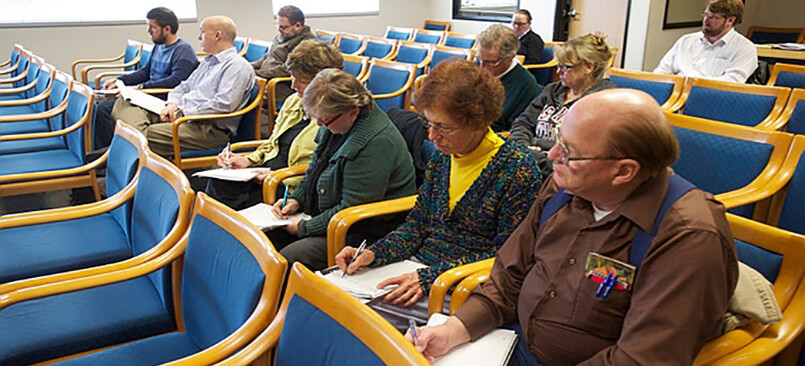[TIPS] Beyond the Opposition – How to Engage the Moderates

I think we can agree that the types of people who show up to public meetings are not very representative of the general population. This observation raises an important question. When we design our public engagement process, who should we be targeting?
The keenest and most motivated participants are easy. They will show up no matter what. Unfortunately, there’s few of them and they usually hold rigid, extreme, and often negative opinions. The rest of the population are either less motivated, too busy for public meetings, or both.
For public planning projects, it’s a crying shame because these folks can be the most constructive and supportive voices in the community if only we can find a way to engage them. For this reason, people who are less likely to participate are the most important targets of designing a broad and inclusive engagement program.
Why do the public seem so angry?
For any project that impacts the public, there will always be people strongly in favor and strongly opposed. Too often we only end up hearing from the folks who are strongly opposed. The reasoning is simple: anger or fear of a proposed project are excellent motivators. These people will go to great lengths to voice their opposition.
Happiness or satisfaction, it turns out, are often not enough to encourage someone to get off the couch. People don’t often march in support of something.
The last group, the vast majority of the population in most cases, are the moderates who are the most open-minded and have not yet formed a strong opinion. These people will base their decision on real information from both sides of the debate. The trouble is that it’s very tricky to engage them.
Where are the moderates?
In most communities, what the average person thinks about an issue is a mystery. It’s become politically incorrect to talk about our values publically and since most people don’t participate in civic events, project leaders are often in the dark about their views. All too often that leaves the decisions to be influenced by the folks with extreme and often minority views.
Why are the moderates less likely to participate? Here is what we’ve heard repeatedly:
- They are too busy and don’t have time to attend public meetings,
- They don’t have strong feelings about the planning process,
- They don’t feel qualified to have an opinion, or
- They are supportive of the agency and feel confident in the direction they are taking.
Since these are the very people who are most likely to provide constructive feedback, it’s critical to find ways to engage them.
How to reach the average person
The most effective way to engage these people is to address the obstacles that are keeping them from engaging – thus lowering the barriers as much as possible.
Online engagement tools can be a very effective way to accomplish this, making it easier to reach out, engage your community and collect informed input. When implemented with care they can provide an easy and fast way for even the least motivated to get involved and provide informed feedback.
What happened when Tampa tried online engagement?
During the Imagine 2040 Hillsborough project, our client assumed that the majority of their local community were in favour of the current state of the region: automobile-oriented, low-density urban sprawl with virtually no new development occurring near job centers. This assumption was based on what they were used to hearing from the “public” at traditional workshops and meetings.
The shock came when they used MetroQuest to educate people about the pros and cons of planning options and then collect their feedback on preferred scenarios online. After receiving over 250,000 votes, comments and other data points from a broad demographic, they were shocked to see that over 80% of participants were actually in favor of a much more densely populated downtown core with extensive public transportation options and support for cyclists.
The unprecedented public input led to the unanimous adoption of the new regional plan and has expedited its implementation. They have already approved one of Florida’s first bike share programs and transit-oriented development in several key hubs.
This example did a great job addressing the most important barriers to participation:
- They made it easy and fast to participate using any device, and even provided kiosks in community centers for those without computers or smartphones,
- They provided tools in multiple languages to accommodate a diverse population,
- They educated people about the impacts of alternatives in terms that resonated with their priorities, and
- They presented alternatives visually to make it easy to understand what’s at stake.
While each project is different, the patterns discussed here apply to communities across the continent. Don’t underestimate the importance of engaging the moderates in your community. They could hold the key to success for your public engagement process.
For tips and best practices on how to use online engagement tools effectively, download our new guidebook here.
The next time you do one of these, you should also ask them if they are actually living in the type of environment they claimed they want, and if not why not. The answers could be quite interesting, even if some of them aren’t true.
Interesting idea Sam. While our clients have ultimate control over the questions that get asked and each project is different, there are always opportunities for people to make general comments and they tend to be a very good barometer of the general mood of the community. The most frequent comment is “thanks for asking for our input.” There tends to be a general sense of disconnection to decision making processes that has built anxiety in many communities. I also suspect, as you imply above, that it suggests a dissatisfaction with the status quo. Like you, I’d like to know more about why.